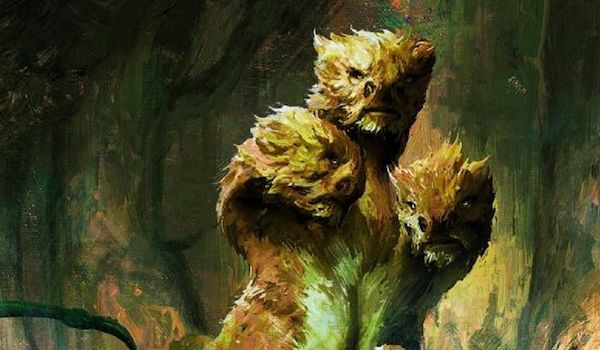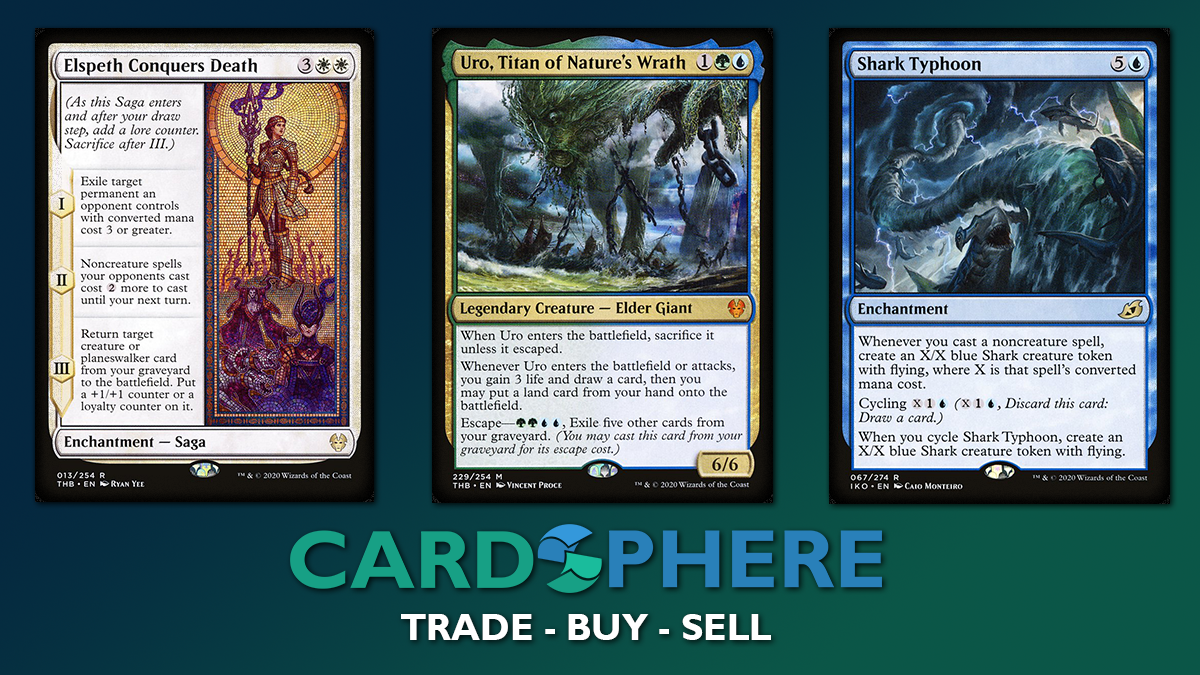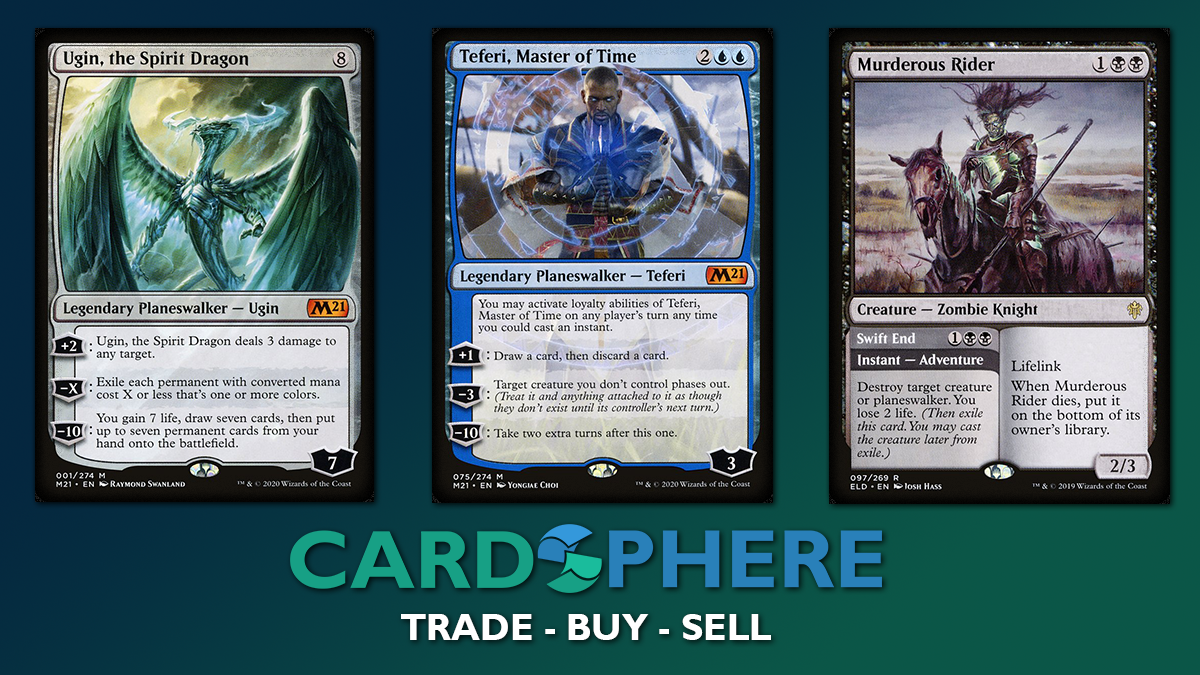Rotation is Coming: Best Wildcard Investments

Rotation is just around the corner and even though spoilers for Zendikar Rising are weeks away at the earliest, it's good to begin thinking about the best investments for wildcards if Standard is your format of choice on MtG Arena. Typically, aggro to midrange decks are highly played shortly after rotation, but there are a few control cards worth thinking about using for wildcards as well. Remember that wildcards are not the easiest to acquire on Arena, so it's best to evaluate your playstyle, and think about what colors you plan on playing post-rotation.
As stated in the August 2020 State of the Game, Wizards plans on releasing a format where people can begin practicing for post-rotation called Standard 2021 Ranked (Best-Of-One only), so this is a great place to begin evaluating what cards are going to help you determine how you'd like to play competitively, and how to invest your resources.

Embercleave
It should be no surprise that Embercleave is one of the best investments post-rotation as the card is a staple in any aggro-to-midrange deck that uses mountains. Since shock lands are rotating, it's important to note that the format will be slowed. Aggressive decks are usually the first place people tend to turn after rotation, and since Anax, Hardened in the Forge , Torbran, Thane of Red Fell, and Castle Embereth are not rotating, Embercleave will have a home in mono Red decks for some time. It is also important to note that Gruul Midrange is probably not going anywhere either due to powerful cards including Terror of the Peaks , Questing Beast, and Elder Gargaroth. Last but not least, I would not be surprised to see Embercleave in the wishboards of Temur Clover since some of those cards will be rotating as well.
Brazen Borrower
Speaking of Temur Clover, one of the biggest staples of its deck, as well as Bant Midrange, Sultai Midrange, and Azorius Control is Brazen Borrower. The past few days on social media, people have been getting tired of seeing this clever little adventure card bouncing a card as well as providing a 3/1 flyer. As proven by the now-banned Teferi, Time Raveler, disruption in the early game is exceedingly important to slowing down aggressive decks, and will be even moreso post rotation when the aggro decks will be even more common. Even if Temur Clover is not the most powerful deck, you can count on Brazen Borrower being a presence on the format whenever someone is playing a Blue midrange or control deck.
Shatter the Sky
By far one of the best board wipes with very little drawback, if you plan on playing control at all, this will be an important use of a rare wildcard because you'll need a way to fend off those aggressive decks. Shatter the Sky has stayed relevant since Theros Beyond Death, and will continue to remain relevant in Standard until its rotation over a year from now.

Elspeth Conquers Death
If a deck runs white outside of very aggressive decks, they will be running Elspeth Conquers Death. Possibly one of the best Sagas ever created, Elspeth Conquers Death is a value card that exiles, inconveniences the opponent for a turn, and returns a card from the graveyard. It is possible that another card could be printed to Assist with this synergy, especially since Teferi, Time Raveler is gone. In Bant Midrange, Elspeth Conquers Death could be played as early as turn 3-4, especially with assistance from our next card:
Uro, Titan of Nature's Wrath
Admittedly, this card should have been placed before Embercleave if this were to be a Top 10 list versus an assortment of important cards on which to spend wildcards. However, you must also consider that this card could be banned sometime within the next year -- especially if its ramp causes broken synergy and/or combos with cards yet to be printed. Note that if Uro is banned, you typically will receive wildcards back (it's been done with past bans). Uro is the most powerful card in Standard in light of recent bans, and will continue to be for the foreseeable future.
Shark Typhoon
Admittedly, the idea for this article started as a whole bunch of aggressive cards that will rule the format, but there is a ton of blue that will also see a ton of play post-rotation. Shark Typhoon fits in almost any deck that runs Blue. Most of the time, people will see Shark Typhoon being used as a way to cycle and create a powerful Flying creature. It is also possible there could be an Izzet deck created where we see the powerful sword Embercleave attached to a flying shark token.

Stonecoil Serpent
colorlessScavenging Ooze
The Ooze wreaked havoc many years ago in Standard, and it now returns with a vengeance. Ooze is the worst enemy of anyone who wants to use the graveyard for anything, including the common Uro, Titan of Nature's Wrath. There is no downside to using Scavenging Ooze as it is great early, mid, and late game. This card could easily have been mentioned next to Stonecoil Serpent, as it also serves as a great host for mutate creatures.
Questing Beast and Elder Gargaroth
These two absolutely have to be put into the same category because they are both bulky green monsters with a wall of text. Questing Beast is great for getting rid of planeswalkers, especially quickly with its Haste option. If the format is slower, you may want to invest in Elder Gargaroth instead as it creates a bigger reward, but at the cost of being vulnerable for a turn without haste.

Ugin, The Spirit Dragon
With the War of the Spark planeswalkers rotating out, don't forget about the one that will be arguably the most powerful in the format: Ugin, the Spirit Dragon. With great ramping options like Cultivate, Uro, and Migration Path, this expensive behemoth becomes accessible to the mid game. Some current decks revolve around the strategy of getting out Ugin as fast as possible to take over the game, and I expect more cards to be printed in Zendikar Rising (with Landfall commonly appearing) to further incentivize this strategy.
Teferi, Master of Time
Just because Teferi, Time Raveler has disappeaRed into the sunset does not mean there will not be a third in the trilogy. Teferi, Master of Time will be used in most mid-to-control decks because he protects himself when he hits the field via the -3 ability. There's too much value in Teferi for the card to completely disappear. Will people be playing it as much as Ugin? That's something only time can reveal, but if you enjoy playing Blue decks, Teferi, Master of Time is a solid investment.
Murderous Rider
Most, if not all, decks running black will be using this awesome adventure card that not only destroys a planeswalker or creature, but also provides a 2/3 body with Lifelink. Other than paying the small price of 2 life for the Swift End part of the card, there are no drawbacks as it provides a fantastic amount of value.
While there are other cards beyond those listed that could make a big difference, these are the rares and mythics (not including Triome/Temple lands) that will provide the best returns on investment going into Zendikar Rising. One of the best ways to prepare other than examining the current Standard post-bans is to look at the last two Zendikar blocks. Battle for Zendikar rewarded people for making the most out of their lands with the awaken mechanic by paying an additional cost to a spell to create a permanent animated land. While in Battle for Zendikar, the original Zendikar set had some innovative uses for Landfall, such as creating tokens, pumping creatures, exiling cards, and manipulating life totals.
Join the Standard 2021 Event coming to MtG Arena soon and begin doing research on which cards to spend your wildcards to be best prepaRed for rotation and Zendikar Rising Standard.
